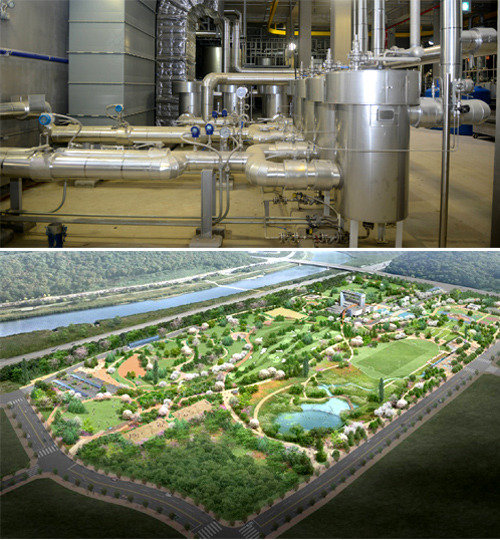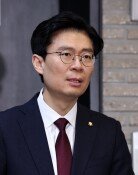Korea’s largest sewage plant to be completed by year's end
Korea’s largest sewage plant to be completed by year's end
Posted March. 03, 2017 07:09,
Updated March. 03, 2017 07:16

Sewage treatment facilities had been mostly shunned and opposed by nearby residents. Bakdal Plant, which initiated in 1992, was not also free from civil complaints on stench coming from a facility that covers 300,000 tons of waste water every day from large areas encompassing the nearby cities of Gunpo, Uiwang and Gwangmyeong. As an express railway was decided to be built in Gwangmyeong, concerns heightened over possible consequences, and the facility was decided to be located underground as Anyang and Gwangmyeong cities agreed in 2008. Led by the Korea Land Housing Corporation, the large-scale construction project reaching 321.8 billion won began, and is currently pounding the ground.
By placing the sewage treatment facility underground, however, a miracle happened; Not In My Back Yard (NIMBY) facility has become a Please In My Front Yard (PIMFY) facility. The Union Park in Hanam City, Gyeonggi Province would be the best example. As the sewage facility was buried underground, the land covering the facility transformed itself into a park for residents. Chimney, which used to purify stench, was redesigned into an observatory. Furthermore, as complex shopping mall Starfield moved in across the road in the latter half of 2016, Hanam is becoming a hot spot for regional tourism and shopping venue. The best practice continued, including “Suji Restpia” located in Yongin City, Gyeonggi Province.
Bakdal Plant also plans to build parks and other amenities on the ground for nearby residents. Reborn under the name of “Anyang Saemul Park,” the space reaches up to 180,000 square meters, equivalent of 20 soccer stadiums. In addition, various sports facilities including baseball stadium, tennis and basketball courts will be built, along with grass gardens and urban forests.
The sewage treatment facility itself has also made enhancements with better technology and equipment. Nonetheless, the new facility requires triple amount of electricity compared to the former ground facility, as lights should be installed and additional purification and emission process is required to solve the odor issue. However, Bakdal Plant managed to build a power generating facility using biogas such as methane gas which can be extracted during the sewage sludge processing stage. With the new power generation, the plant will be able to generate around 12,000 MWh of electricity per year (or annual power supply for approximately 3,000 households a year). Thanks to additional power supply, the plant can conserve surplus electricity, and reduce by around 19,502 tons of greenhouse gas every year.
Moreover, stenches from sewage treatment processing will undergo three to four purification processes. In addition, maximum prevention has been made to capture odors being leaked outside the septic tank with double doors. A tour inside the plant also revealed that stenches were rarely felt besides areas where sewage was openly processed. Furthermore, chimneys will be built high enough for a more pleasant living environment. Ongoing plans include using chimneys as observatories, just as the ones at the Union Park.
“(Bakdal Plant) can be called as a best practice where the once unwanted environmental infrastructures creating NIMBY syndrome transformed into amenities and blended well into our daily lives,” said Jeon Byeong-seong, CEO of the Korea Environment Corporation which ordered the ongoing construction. Indeed, various opportunity costs will be saved, as environmental infrastructures have roamed out to the outskirts locate closer to residence. The ground park will be open to the public by September.
Mee-Jee Lee image@donga.com







